Sunday, May 29, 2011
Franschoek Literary Festival
I was a participant at this year's Franschoek Literary Festival on 13-15 May. I discussed 'Lekker English' with linguist Raend Mesthrie and chatted about my fiction alongside authors Doreen Baingana and Marguerite Abouet at a panel discussion chaired by Edyth Bulbring.
Monday, May 23, 2011
Landmarks rekindle memories of the way we were
SITTING in the Bioscope in Joburg’s CBD took me back. Beigebrown leatherette chairs, hard neon lighting, and an industrial grittiness to the small cinema.
But what did it take me back to? I couldn’t say exactly. French film actress Simone Signoret famously called her autobiography Nostalgia Isn’t What it Used to be, but sometimes there’s another word for it, a word that English doesn’t have. No, it wasn’t nostalgia, but a vague sort of memory perhaps, a memory you can’t always put your finger on, something that shimmers out there, until you can grab it, date it.
Places do that to you – bring you back to the past in ways you had never considered. That’s one of the beauties of having lived in one city most of your life, or most of your life. The past fuses, and little things bring it all back.
Memories I hadn’t thought of for years came back – being 14-years old, ordering Bimbo’s burgers after school or on Saturday nights. They came with a pink sauce: a combination of tomato sauce and mayonnaise, and very deliciously lapped up then. Afternoons of sitting at the table at Bimbo’s, watching Madonna on the television set, discussing such matters as the right age to lose your virginity.
I hadn’t thought about pink sauce for years, in fact, I was half tempted to try it again, but perhaps some things are better left to a teenager’s memory.
Similarly, visiting Norwood, again now off the beaten track for me, is another jolt into and out of the past. When I was growing up, living in a home just off Grant Avenue, there were two restaurants on the strip: La Lampara, since relocated to KwaZulu-Natal and the Drug Store. The Drug Store was an institution, it lasted long into my mid-twenties: a place of fries, burgers, milkshakes and memories, not least of which was trying to stretch our rands between a group of us. Nobody shares a burger better than teenagers and university students.
But by then other restaurants were beginning to mushroom along Grant Avenue, and the Drug Store was no longer unique. Still, I drive past the place where the Drug Store used to be – a secondhand-furniture, clothes and odds and sods sorts of place – and I’m looking twice. The Drug Store stands there still – so ingrained in my memories and experiences.
Kensington, Bedfordview and Edenvale provide another sense of déjà vu for me. I lived in Troyeville then – on the same street that David Webster died, and around the corner from the famed Gandhi home. I was a reporter for the community paper – and knew the area, like, well the back of my hand. Driving down that broad sweep of Langermann Drive is like driving into another decade, a time when the golf course still existed and hadn’t yet become a site for yet another shopping mall.
In yet another restaurant on yet another corner, three of us chums, all only children, debated our psychologies, wondering how growing up without siblings had affected us.
Days after going to the Bioscope the memory returns. At the age of seven my mother took me to see the movie Odds and Evens. The film has made no impact on me, beyond the fact that we had to write about what we had done that weekend.
I pondered how to spell the name of the movie, thought I had it right, but also thought it best to ask my Grade 2 teacher. It imprinted the memory onto me – a movie house where smoking had just been banned in cinemas, a fact my mother, as a smoker, remarked on, and cartoons and news took up a sizeable time before interval and the main show.
I had forgotten all these details, but they came rushing back, piling up on each other, layering, unlocked by the fact of having sat in another old cinema, the past unlocking like a jigsaw.
Published in The Sunday Independent, May 8 2011
Even the name took me back: the Bioscope. It was what some called the movies way back when – I don’t think I’ve heard the term since the 1980s, perhaps. This was when mall cinemaplexes started ruling the roost and independent movie houses – aha, another word I haven’t heard in ages – started shutting one by one.
But what did it take me back to? I couldn’t say exactly. French film actress Simone Signoret famously called her autobiography Nostalgia Isn’t What it Used to be, but sometimes there’s another word for it, a word that English doesn’t have. No, it wasn’t nostalgia, but a vague sort of memory perhaps, a memory you can’t always put your finger on, something that shimmers out there, until you can grab it, date it.
Places do that to you – bring you back to the past in ways you had never considered. That’s one of the beauties of having lived in one city most of your life, or most of your life. The past fuses, and little things bring it all back.
I went to a new friend for lunch one day, driving back to Highlands North and on past Balfour Park and my old high school, Northview. Turning from Louis Botha Avenue I passed the corner where Bimbo’s used to be. Suddenly, in my mind’s eye, the current fast food establishment – I think it’s a fish joint – disappeared, much as Bimbo’s disappeared from that spot years ago.
Memories I hadn’t thought of for years came back – being 14-years old, ordering Bimbo’s burgers after school or on Saturday nights. They came with a pink sauce: a combination of tomato sauce and mayonnaise, and very deliciously lapped up then. Afternoons of sitting at the table at Bimbo’s, watching Madonna on the television set, discussing such matters as the right age to lose your virginity.
I hadn’t thought about pink sauce for years, in fact, I was half tempted to try it again, but perhaps some things are better left to a teenager’s memory.
Similarly, visiting Norwood, again now off the beaten track for me, is another jolt into and out of the past. When I was growing up, living in a home just off Grant Avenue, there were two restaurants on the strip: La Lampara, since relocated to KwaZulu-Natal and the Drug Store. The Drug Store was an institution, it lasted long into my mid-twenties: a place of fries, burgers, milkshakes and memories, not least of which was trying to stretch our rands between a group of us. Nobody shares a burger better than teenagers and university students.
But by then other restaurants were beginning to mushroom along Grant Avenue, and the Drug Store was no longer unique. Still, I drive past the place where the Drug Store used to be – a secondhand-furniture, clothes and odds and sods sorts of place – and I’m looking twice. The Drug Store stands there still – so ingrained in my memories and experiences.
Kensington, Bedfordview and Edenvale provide another sense of déjà vu for me. I lived in Troyeville then – on the same street that David Webster died, and around the corner from the famed Gandhi home. I was a reporter for the community paper – and knew the area, like, well the back of my hand. Driving down that broad sweep of Langermann Drive is like driving into another decade, a time when the golf course still existed and hadn’t yet become a site for yet another shopping mall.
In yet another restaurant on yet another corner, three of us chums, all only children, debated our psychologies, wondering how growing up without siblings had affected us.
Days later it came to me – why the Bioscope seemed so strangely, vaguely familiar. Two years ago in the US a friend took me to see a movie in an art deco cinema in Oakland. The foyer was grand, impressive with sweeping architectural curves, but the cinema itself was strangely bare. Hard seats, black scuffed floors, like the back of a school hall. Again, there was something familiar, but I couldn’t put my finger on it.
Days after going to the Bioscope the memory returns. At the age of seven my mother took me to see the movie Odds and Evens. The film has made no impact on me, beyond the fact that we had to write about what we had done that weekend.
I pondered how to spell the name of the movie, thought I had it right, but also thought it best to ask my Grade 2 teacher. It imprinted the memory onto me – a movie house where smoking had just been banned in cinemas, a fact my mother, as a smoker, remarked on, and cartoons and news took up a sizeable time before interval and the main show.
I had forgotten all these details, but they came rushing back, piling up on each other, layering, unlocked by the fact of having sat in another old cinema, the past unlocking like a jigsaw.
Published in The Sunday Independent, May 8 2011
Friday, May 20, 2011
Review of An Intimate War by Donvé Lee
THE intimate war – that closed battleground between a couple, fought within the confines of coupledom but, at times, no less bloody and messy and horrific than that fought between thousands in so many public war zones.
And, even harder to understand, both for those within the intimacy of that personal zone and those standing by watching the wrestling of two people, is being unable to comprehend or to help.
This novel charts the unsteady, murky territory of the relationship between an unnamed man and a woman. They come together, move apart, and come together again, drawn time and again by the passion that unites them, despite the destructive forces that run through their relationship.
As reader, you know what you’re in for from the moment you read the opening line: “The first time we divorced we did it on a serviette,” a divorce that leads once more, to undressing and “our limbs entangled with the limbs of the tree, my feet rooted in the ground my arm stretched out to the sky”. We’re in the tangled, twisted territory of attraction here, and so the narration continues.
The prose is poetry, almost dreamy, the story is told almost entirely in the present-tense, with Lee using the second person point of view to tell the story, the narrator addressing the text to the you of the man she seemingly cannot separate from. This can be a difficult device to sustain – although Lee manages it with a skill that means you read effortlessly, and it carries you along so that you don’t notice the unorthodox narration. The lack of quotation marks around speech adds to the dreamy, surreal quality of this story, and yet the tale is anything but dreamy.
Lee’s style is to use run-on, made up compound words, punctuation sometimes discarded in an effort to let the text flow on, again a style that evokes the half-wavy, half-seen dream world.
Instead what follows is heartbreaking, all too real, and not dream-like at all. It’s the poignant story of a man and woman who will find their love stretched and broken by the man’s inability to trust the woman. His turbulent, volatile emotions destroy their world, even though the woman tries to hold on, her love somehow intact, strong, always trying to mend his shattered soul.
It’s not hard to see why she carries on trying, the eroticism of the man’s love is forcefully expressed. Despite his own wounds this is a man who “is handing me back to myself. “Through the promise in your eyes. Beneath the balm of your voice. Under the miracle of your tongue.” He buys her a full-length mirror, encourages her to explore and love her body, despite its plumpness that she so despises, or has despised. And in tender love scenes that most intimate act assumes its beauty and power through Lee’s poetic touch.
And yet, within the love, poison: “A carapace has begun to grow over my soft centre. Your offerings of flowers have lost their innocence. They are bittersweet pills you feed me in an attempt to erase the latest bruises on my heart. It’s not your flowers I want, it’s your trust.”
Instead the narrator finds herself defending her decision to wear lipstick when she goes out, with the man accusing her of trying to attract other men, and the violent cycle has begun: “My daughter watches and she learns about the things women do to please their men.”
And still, the push and pull continues, coming together, driven apart, desire and love morph into despair and the therapist’s eyes assume the woman’s pain, and still the rollercoaster of it all continues, an intimate love closed to the understanding of outsiders.
Why do we love the people we do, and how can we untangle ourselves from destructive passions? There are no answers, simply the continuing tide of love through it all.
Published in The Star, April 7 2011
Labels:
Arja Salafranca,
Book reviews,
Donve Lee,
Jacana,
novel,
The Star
Monday, May 16, 2011
The Edge of Things at the Franschoek Literary Festival
The Edge of Things, published by Dye Hard Press, together with The Thin Line by Arja Salafranca, published by Modjaji Books, for sale at the Exclusive Books stand.
Photo: Arja Salafranca
The Edge of Things: South African short fiction selected by Arja Salafranca
ISBN: 978-0-620-49506-6
The authors are Jayne Bauling, Arja Salafranca, Liesl Jobson, Gillian Schutte, Karina Magdalena Szczurek, Jenna Mervis, Jennifer Lean, Fred de Vries, Margie Orford, Aryan Kaganof, Bernard Levinson, Hamilton Wende, Pravasan Pillay, Beatrice Lamwaka, Hans Pienaar, Rosemund Handler, Tiah Beautement, Angelina N Sithebe, Jeanne Hromnik, David wa Maahlamela, Perd Booysen, Gail Dendy, Silke Heiss and Dan Wylie.
280 pages.
Will soon be available from bookstores countrywide, estimated retail price R185.
Labels:
Dye Hard Press,
Short fiction,
The Edge of Things
Subscribe to:
Posts (Atom)





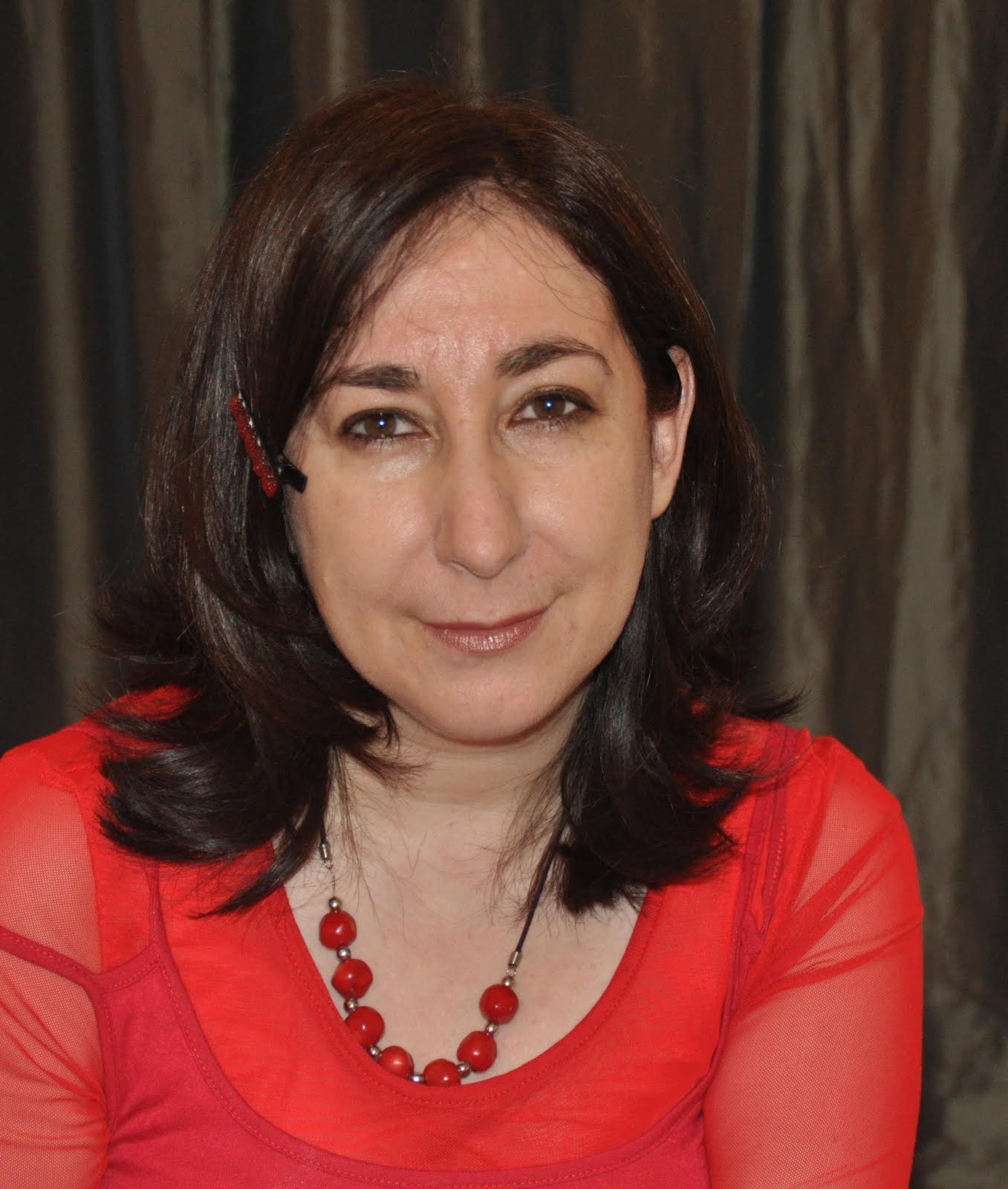
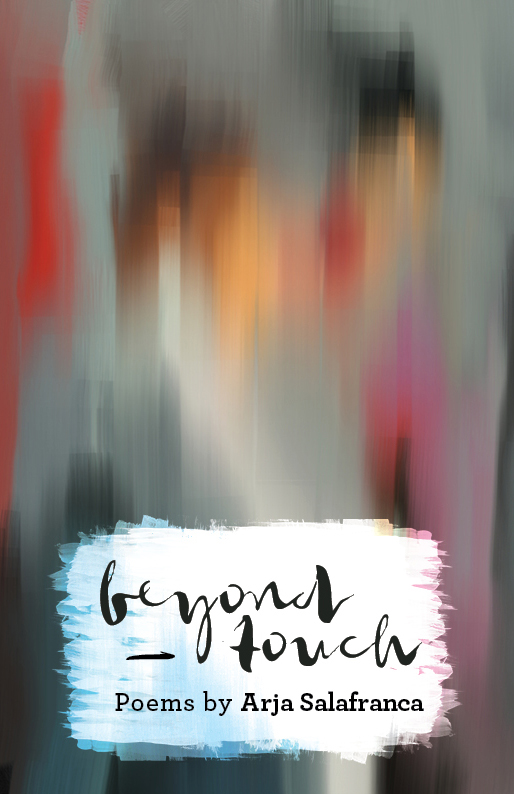
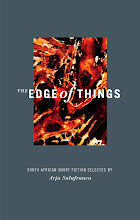
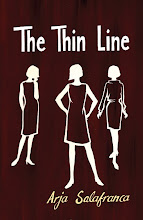
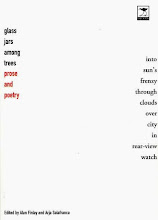
.jpg)
